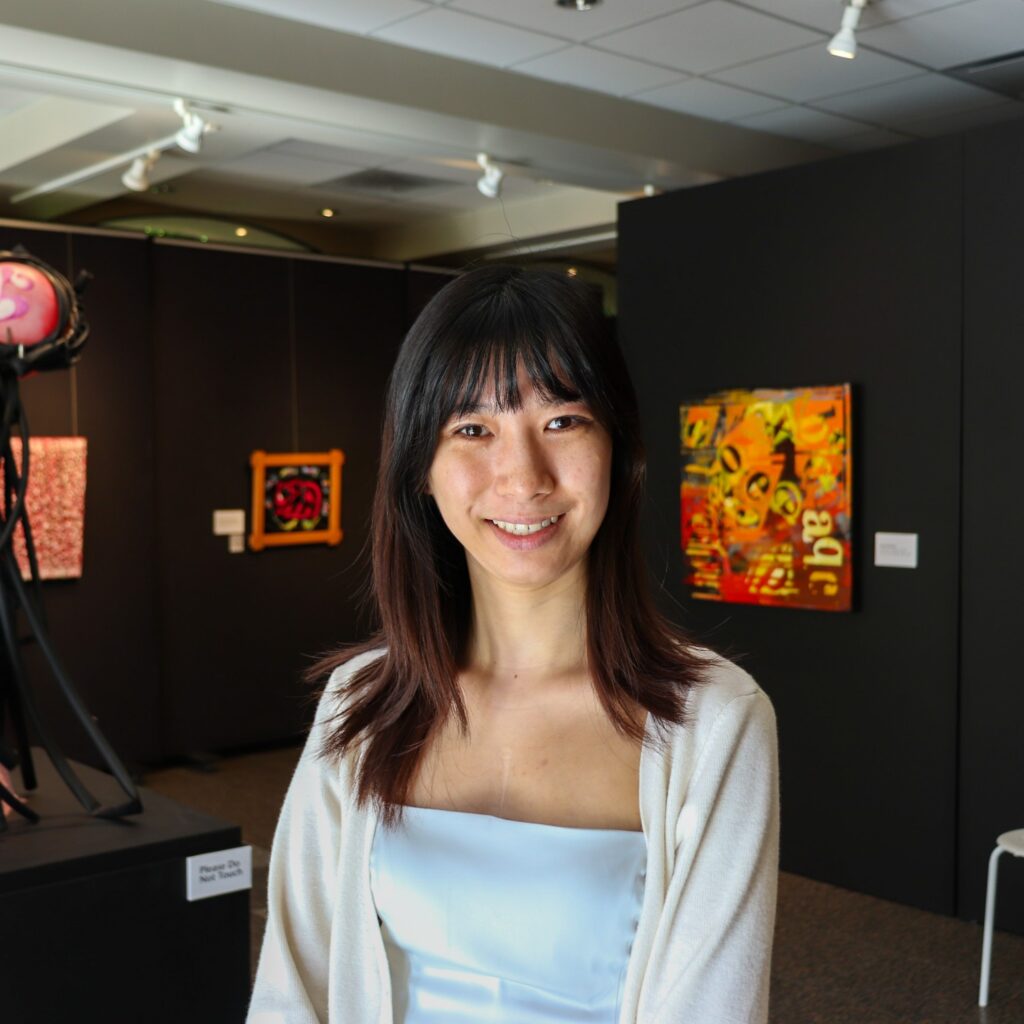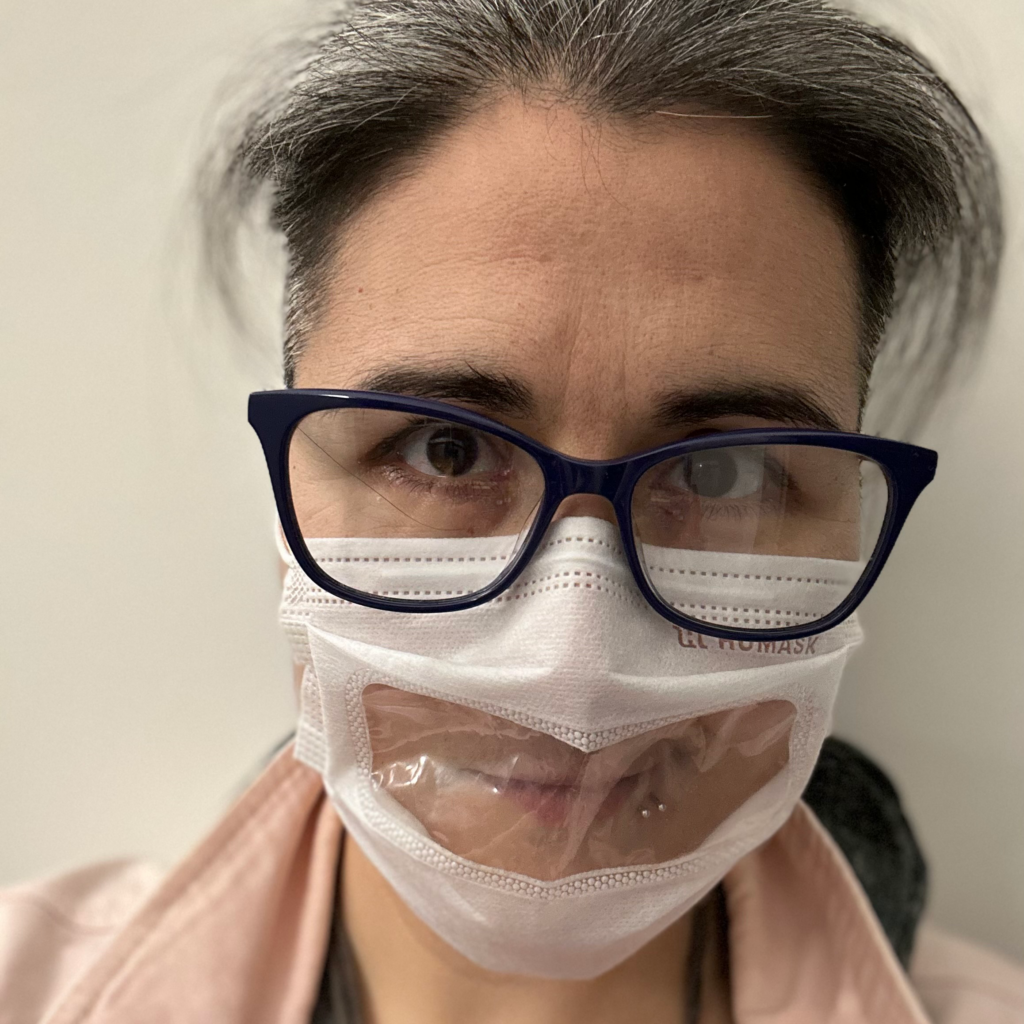By Kay Slater
It took me a year to process my thoughts fully on the non-verbal engagement last year. As we move into the program’s second year, I wanted to share how meaningful it had been, how important it is to the programming we do and continue to do at grunt gallery, and my excitement to begin again next month (February 2025).
In February 2024, I fully committed to a month-long non-verbal engagement within a professional arts space. It was an experience of permission, challenge, and deep reflection. Alongside hosting the first-ever non-verbal artist-in-residence at grunt gallery, I took a personal “vow” or commitment to silence—turning off my voice in all professional and private settings for the duration of the project. This was not just an experiment in access but a lived practice, one that illuminated the ways in which speech is assumed, expected, and often demanded.
Building the Space for Silence
The non-verbal engagement at grunt was designed as part of the Accessible Exhibitions and Public Engagement (AEPE) initiative. This programming prioritized non-verbal communication as a valid, rich, and supported artistic and professional mode. For four weeks, I navigated my preparatory, administrative, and interpersonal work entirely through text, ASL, gestures, and other visual or written communication methods. This was not about absence nor about deprivation—rather, it was about making space for something different.
The experience was shared with artist-in-residence Kelsie Grazier, a Deaf artist whose own relationship to speech and silence carried its own complexities. Late-deafened and not confidently fluent in ASL, Kelsey and I had numerous conversations about feeling like outsiders—even within communities that are themselves marginalized. We both understood, in different ways, the layered dynamics of permission: who gets to speak, who is understood, and who is given the space to be silent without consequence.
Permission and Power
What struck me most during this month was how much of my anxiety leading up to it was tied to external permission. I had the full support of my colleagues at grunt, who were already familiar with my radical access projects, but I still wondered—would they adapt? Would they resent the additional effort required to shift communication styles? Would I?
These worries faded quickly. I found a sense of relief in silence, in the ability to process without the pressure to perform speech. I found that my thoughts became more intentional, my interactions more deliberate. I was not filling space for the sake of it, nor was I scrambling to ensure I could hear and respond in ways that met the expectations of an oral-centric environment. The radical act was not in the silence itself but in the refusal to make it smaller, to accommodate for the comfort of others.
What also became apparent was that while silence was freeing for me, it was uncomfortable for others. Visitors, colleagues, and artists accustomed to spoken exchanges had to adjust. Some did so fluidly, others struggled. It revealed how embedded verbal speech is as the primary mode of engagement—even in an artist-run centre known for its commitment to access and experimentation.
Low-Sensory and Voice-Off Hosting as a Precursor
This project was not a sudden shift in grunt’s practices but rather an evolution of work that had already been happening. For two years leading up to this engagement, grunt and I have hosted low-sensory and voice-off Thursdays, a dedicated day where visitors are invited to engage with exhibitions in a quiet, scent-free, and low-stimulation environment. It is a space where people can experience art without the expectation of verbal or even interpersonal interaction. The gallery staff were already accustomed to supporting silence as an access practice, making the transition into this more structured non-verbal engagement a natural extension rather than an entirely new challenge.
During voice-off Thursdays, visitors are encouraged to communicate via text, gestures, or ASL if they are able. Masks are required, and gallery staff—including myself—would not initiate spoken conversations. This experience has solidified my understanding that silence is not inherently exclusionary; rather, it can be an intentional space of care and consideration. It also highlighted the tension between silence as an access need and silence as something viewed with suspicion or discomfort by dominant cultural norms.
Expanding the Conversation
One of the most striking moments of the engagement was the non-verbal roundtable. It brought together artists with varied relationships to speech, signing, and text-based communication. We had Deaf artists whose primary language was Persian Sign Language, a hard-of-hearing artist who had no signing ability, and multiple layers of interpretation and transcription bridging the conversations. And yet, the same power dynamics that exist in dominant culture played out in microcosm—those with the fastest communication methods (fluent signers) dominated, while those relying on slower methods (text-based) were often sidelined. It was a lesson in how power shifts but does not disappear in new environments. Access is not a checklist—it is an ongoing negotiation.
Personal Reflections: Silence, Safety, and Cultural Assumptions
As a hard-of-hearing individual who has primarily relied on spoken language, I have spent the past decade exploring silence as a means of navigating hearing society with more safety and self-respect. Learning ASL as an adult has given me another tool for communication, but silence itself has become an equally valuable resource. The choice to be non-verbal during this residency was not difficult—it was an act of respect. If the artists I was hosting were not speaking, why would I? It was not about making a point, but about aligning my communication choices with the space we were creating together.
This mirrors practices within Deaf culture, where choosing not to speak in signing spaces is an act of respect, not deprivation. In contrast, hearing-dominant cultures often interpret silence as secrecy, defiance, or even rudeness. The assumption that communication must be verbal to be valid is deeply ingrained. By embodying non-verbal engagement, I was not just supporting the artists—I was challenging these assumptions in real time.
What I Took Away
The biggest revelation of this month was not just about silence but about the right to exist non-verbally without justification. I had spent years finding ways to explain, excuse, or make space for my own hard-of-hearing identity and my increasing desire to opt out of speech. In February 2024, I simply existed in it. And in that existence, I learned that radical silence is not passive. It is an active, intentional presence.
I left that month with a clearer vision for what has become the Radical Silence Project within my own artistic practice. It’s an exploration not just of access but of agency, of the power in choosing when and how to communicate. It was a turning point, both for me and for the project, setting the foundation for what was to come next.
I am delighted that the non-verbal engagement project has found additional funding and I look forward to continuing to practice radical silence within grunt and alongside other excellent non-verbal artists in years to come.

